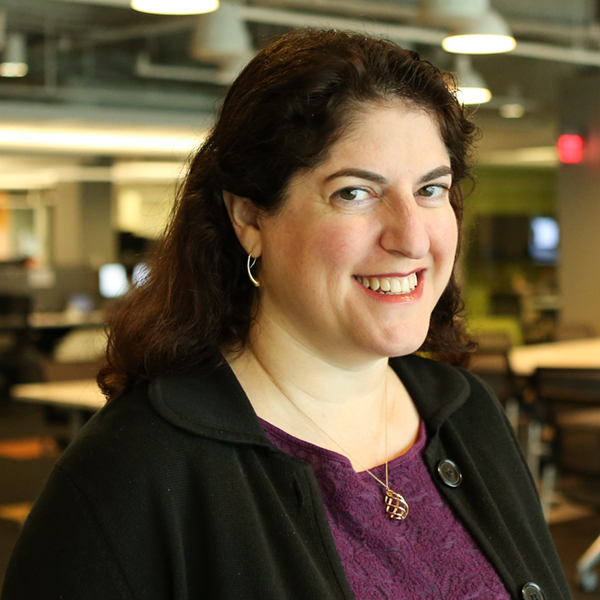Empowering young minds to make the right choices for their health, education, and livelihood at the Kala Ghoda Arts Festival, Mumbai, India.
John is from the school of strategic philanthropy. The foundation he works for has four defined program areas, and he's the head of climate change. He has a well-thought-through theory of change pinned to his office wall, and his team spent nine months refining its highly detailed three-year strategy with clear metrics for success related to each activity. His foundation has three-year grant cycles, and he tries to help his grantees gain sustainable funding in the interval. But even as the board was voting to approve this new strategy, he heard rumblings of a new referendum at the state level that could have a tremendous effect on state funding to his grantees. When it passed, he couldn't react because his funds for the year were spent; even if they weren't, he didn't have the six to eight weeks required to write up detailed new proposals for the board.
Maria considers herself an "adaptive philanthropist." She cares about poverty and has read the research linking various interventions (such as an extended school day with high-quality programs) to gains in student achievement. When grantees come in for meetings, they know they can scribble notes on the theory of change she has tacked on the wall and pose pointed questions about assumptions she's making. Learning and updating her theory with new information is one of the most important things she does. She too has a scorecard of progress, but it's against higher-level outcome indicators rather than specific implementation activities. When a new funding proposal started floating around city hall, she used her flexible capital to help grantees pursue scenario analysis in case the new funding comes to pass. Then, she and her board agreed to increase the organization's allocation to help support passage. When it passed, she and her grantees were poised to seize the opportunity.
 The Giving That Gets Results blog series originally appeared on SSIR.org from October 2013 through December 2013.
The Giving That Gets Results blog series originally appeared on SSIR.org from October 2013 through December 2013.Despite the radical reset of the economy and political stalemate, John's foundation's approach is increasingly irrelevant. Most philanthropists haven't stick to the old model—a rigid plan that they desperately try to follow despite the fact that it won’t work anymore—or they find themselves lurching from grant to grant, slipping back into old, opportunistic habits and making a disconnected set of grants that don’t add up to anything.
Adaptive philanthropy, on the other hand, relies more on decision trees and scenario analysis than on rigid multiyear plans that, themselves, take years to evaluate and months to refresh. It takes just as much analysis, but the analysis is dynamic, not static. Adaptive philanthropists are highly oriented toward the external environment, keeping an eye on important sensitivities and assumptions versus executing what they wrote months ago.
Adaptive philanthropy is one of the more interesting developments in the field of philanthropy. Over the course of eight weeks in the late fall of 2013, SSIR and Bridgespan presented Giving That Gets Results (www.ssir.org/effective_philanthropy), a series of blogs, videos, and webinars that explored adaptive philanthropy, and other important approaches to philanthropy.
As a starting point for this series, we at Bridgespan offered up a few of our ideas about adaptive philanthropy for debate:
- Adaptive philanthropists have clear but flexible boundaries, as well as a definition of what success looks like, for whom, and over what timeframe. This includes taking stock of what you really care about, all of the assets at your disposal (expertise, relationships, voice), what your stakeholders say that you or your staff are really good at, and what you need to learn.
- Adaptive philanthropy defines the anchors of a funder's strategy--what shouldn't change in changing times—and boundaries within which investments can move to catch currents. By what criteria will you judge new opportunities that pop up and determine whether you should seize them?
- Within what they care about, adaptive leaders understand deeply what evidence says about what does and doesn't work, what’s known and unknown. This includes gold-standard evaluation evidence, where available, as well as the voices of beneficiaries or others whose mindset and behaviors funders are trying to influence.
- If such leaders are investing in an area where much is unknown, they have a clear learning agenda and plan to experiment so that they can come down the learning curve as quickly as possible. Such a plan will define assumptions to test and important external factors that will require strategy adjustment.
- With clear boundaries and a goal informed by evidence, adaptive philanthropy does not assume a rigid, paint-by-numbers process to achieve that success. It requires increased comfort with risk and uncertainty. It requires rapid prototyping of ideas, with frequent feedback from important stakeholders—-not once a year, but monthly—-and offers philanthropists outside perspective on their thinking. It requires rapid decision making, shorter cycle times on budgets and paperwork, capital that the funder can allocate flexibly to emerging opportunities throughout the year.
Most philanthropists we know aspire to change the world—that’s why they are in the job. But most don’t feel they have appropriate behaviors and tools to do it. Adaptive strategy requires a wholesale shift in thinking and doing. What became clear over the course of the series was the imperative to fundamentally reimagine how we build strategies and communities in the social sector so that they are more adaptive to an ever-changing and uncertain landscape. And we were struck by a common theme that kept surfacing: engaging constituents—-that is, collaborating with partners and beneficiaries—to more deeply understand what the sector needs and what’s working. The leaders featured in this series have grappled with this transition—and their insights, including the critical role that constituent voice plays in effective philanthropy, point to promising paths forward for giving to get even better, more durable results.


